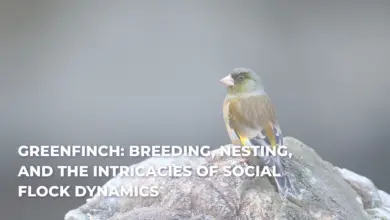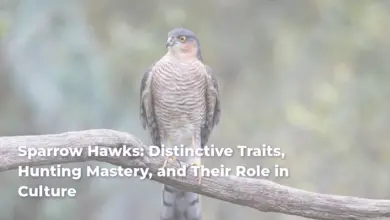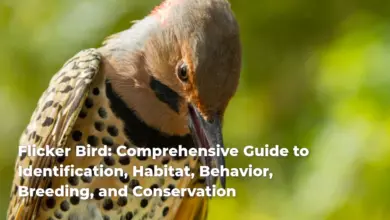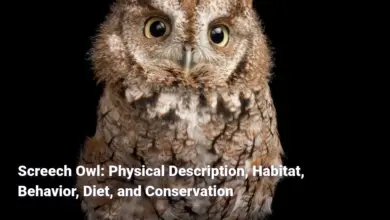Songbirds: Exploring Their Species, Habitats, Behavior, and Conservation Challenges
Songbirds, also known as passerines, are a captivating group of birds renowned for their remarkable vocal abilities and diverse habitats. With approximately 4,000 species identified worldwide, they constitute the largest order of birds, Passeriformes, making them a dominant avian group. Their songs not only fill the air with melodious tunes but also serve essential roles in communication, mating, and territory establishment.
From the jubilant chorus at dawn to the sultry serenades of dusk, songbirds create an enchanting soundscape that can uplift the spirit and connect us to nature. With their adaptability to different environments from bustling urban areas to serene forests songbirds are more than just a visual and auditory delight; they are essential components of ecosystems, exhibiting behaviors and traits that illustrate the intricate relationships between species and their habitats. In this comprehensive exploration, we delve into the various aspects of songbirds, including their types, characteristics, behaviors, and cultural significance.
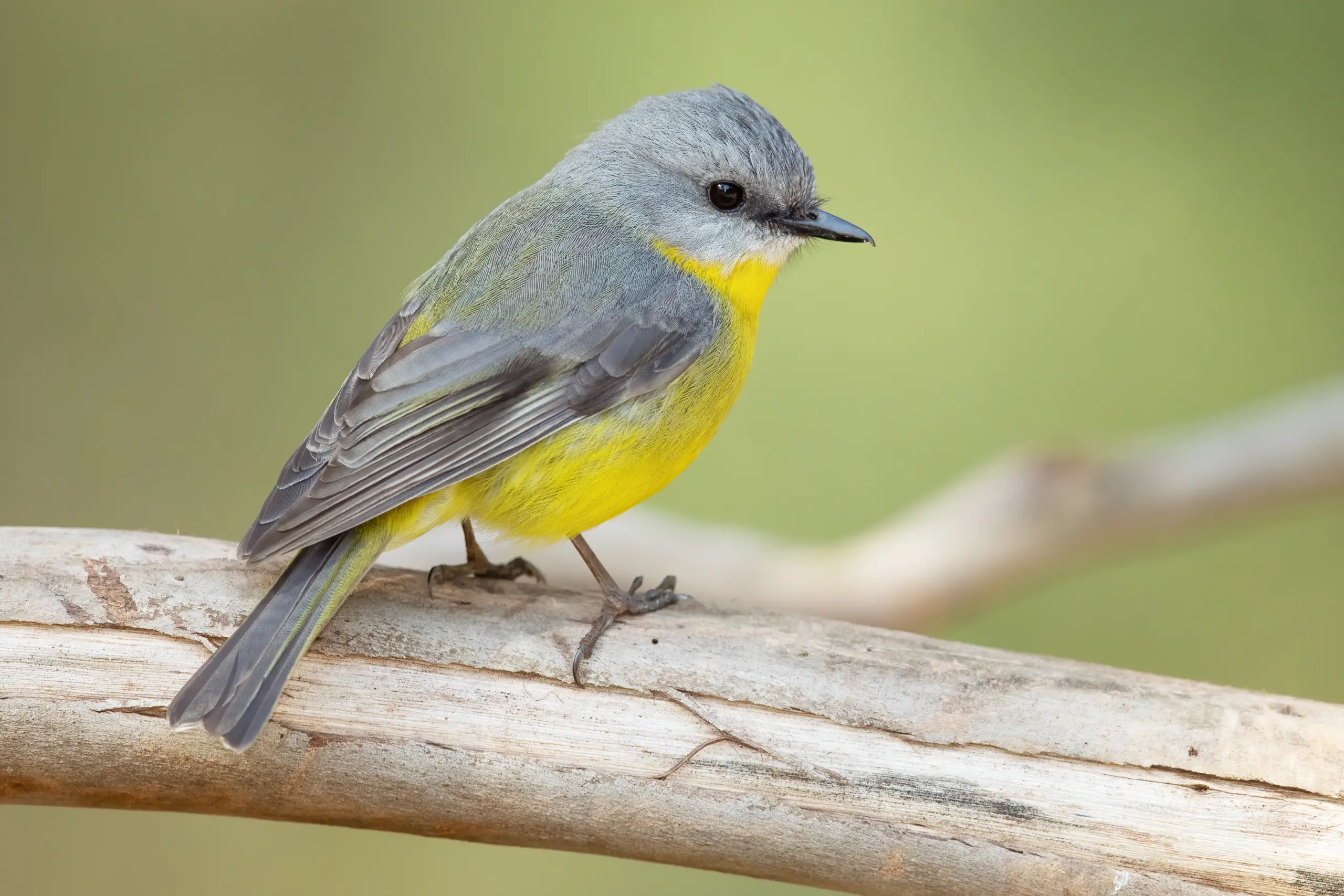
Types of Songbirds
Songbirds, categorized under the suborder Passeri, include a variety of species distinguished by their unique vocalizations and habitats. Each group exhibits specific traits and behaviors that reflect their evolutionary adaptations. Here’s a closer look at some of the primary types of songbirds and their respective characteristics:
- Thrushes: Known for their strong, beautiful songs, thrushes embody the quintessential songbird. The American Robin and Wood Thrush are exemplary members of this family, favoring wooded environments where their melodic calls resonate through the trees. They form strong pair bonds during the breeding season, emphasizing their social nature.
- Wrens: These small yet fierce birds are characterized by their loud and complex vocalizations, often defying their size. Wrens are typically found in dense underbrush, utilizing their agility to navigate through thick vegetation in search of food.
- Finches: With a rich diversity, finches like the House Finch and American Goldfinch are known for their colorful plumage and varied diets, primarily consisting of seeds and fruits. Their adaptability to different environments allows them to thrive in both rural and urban areas.
- Sparrows: This extensive group encompasses numerous species, making them one of the most recognizable songbird families. Their songs can range from simple to complex, used for communication and territory establishment, often seen in gardens and open fields.
- Orioles: Beautifully colored with striking orange and black plumage, orioles are celebrated for their melodious songs. They can often be found in open woodlands and gardens, where their vibrant colors stand out against the landscape.
- European Starlings: Originally from Europe, these adaptable birds have successfully established themselves in North America. With their remarkable mimicry skills, they produce a variety of sounds, including imitations of other birds and even mechanical noises.
- Mimic Thrushes: This group, including the renowned Mockingbird, is famed for its ability to imitate the songs of other birds. These highly territorial birds showcase their vocal repertoire to defend breeding grounds and attract mates.
Understanding the different types of songbirds helps us appreciate the rich diversity within this avian group and the ecological roles they play in their respective environments.
Characteristics of Songbirds
Songbirds are not just vocal performers; they possess a variety of fascinating characteristics that set them apart from other bird families.
- Vocalization: At the heart of a songbird’s identity lies its highly developed vocal organ, the syrinx. This unique anatomical feature allows them to produce a wide range of sounds and complex melodies. Unlike the larynx in mammals, the syrinx is capable of creating multiple sounds simultaneously, enabling songbirds to craft intricate songs that can be used for different purposes whether it be attracting mates or defending territories.
- Plumage Attributes: The plumage of songbirds is a vivid testament to sexual selection. Males often display brighter and more colorful feathers than females, enhancing their attractiveness during mating displays. This sexual dimorphism plays a crucial role in their reproductive strategies, where visual cues can convey messages of health and genetic quality.
- Nesting Habits: Nesting behaviors in songbirds are diverse and specialized. From building cup-shaped nests in trees to creating elaborate woven structures, these birds demonstrate creativity in selecting materials such as twigs, grasses, and mud to create secure environments for their young. For example, the meticulously crafted nests of the House Wren highlight the species’ ingenuity.
- Foraging Behavior: Adaptability characterizes the foraging habits of songbirds. Many songbirds have diets primarily consisting of seeds, fruits, and insects. This dietary flexibility allows them to thrive in varying habitats, making them a significant component of their ecosystems as they disperse seeds and control insect populations.
- Migration Patterns: Numerous songbird species undertake extensive migrations, traveling long distances to reach breeding grounds or seasonal feeding areas, showcasing their resilience and adaptability. The annual migration of species like the American Robin illustrates a profound connection to environmental cycles and resource availability.
Through these characteristics, songbirds enhance their survival and reproductive success, illuminating the profound intricacies of avian life. Their roles in ecosystems extend beyond aesthetic appeal, as they contribute to ecological processes such as seed dispersal and pest control, underscoring their importance to biological diversity.
Popular Songbird Species
In North America, several songbird species stand out for their unique characteristics and widespread presence. Each species contributes to the avian tapestry, bringing a wealth of color and sound. Below are some popular examples:
- Eastern Bluebird: This bird is easily recognizable for its striking blue plumage. Known to inhabit open woodlands, meadows, and gardens, the Eastern Bluebird often nests in tree cavities. Their gentle song and vibrant colors make them a favorite among birdwatchers.
- American Robin: Perhaps one of the most familiar bird sounds in North America comes from the American Robin. With its red-orange breast and cheery melody, this bird favors open habitats such as parks and gardens where it forages for insects and fruits.
- Northern Cardinal: The Northern Cardinal, with its vibrant red feathers and sharp, whistling song, is commonly spotted in urban areas and gardens. These birds enjoy nesting in dense shrubbery, often nesting in locations that provide ample cover.
- Blue Jay: Recognizable by their stunning blue coloration, Blue Jays are intelligent and social birds. They often adapt well to suburban environments, frequenting bird feeders and contributing their raucous calls to the soundscape.
- House Finch: These adaptable finches thrive in urban settings, where they find shelters in building eaves and shrubs. Their cheerful songs and varied diets make them a common sight in gardens, even as they show remarkable adaptability to human presence.
- Mourning Dove: The Mourning Dove’s gentle cooing adds a tranquil element to the avian chorus. Preferring open spaces and fields, this species is often observed foraging for seeds on the ground.
- American Goldfinch: Known for their brilliant yellow plumage, particularly in the breeding season, American Goldfinches frequent weedy fields and gardens, eagerly visiting thistle feeders during warmer months.
- Black-Capped Chickadee: These small, friendly birds are beloved for their curious nature and distinct “chick-a-dee-dee-dee” call. Typically found in wooded areas, parks, and gardens, they are frequent visitors to bird feeders.
These popular songbird species not only enrich ecosystems but also provide opportunities for birdwatching and conservation efforts. Understanding their habits and behaviors can deepen our appreciation for these charming avians and motivate us to protect their habitats.
Songbird Habitats
Songbirds display remarkable adaptability, inhabiting a wide range of ecosystems, from dense forests to urban settings. Their habitat preferences vary significantly depending on factors such as food availability, nesting opportunities, and protection from predators. Here’s a concise overview of the primary habitats favored by songbirds:
- Forests and Woodlands: Many species thrive in forested environments, which offer rich food sources, nesting materials, and shelter. Whether it’s the American Robin flitting through the understory or the Wood Thrush singing from a tree branch, these habitats are crucial for their survival.
- Grasslands and Meadows: Open areas provide vital space for foraging and nesting. Species like the Eastern Bluebird and American Goldfinch find plenty of insects and seeds in these sunny locales.
- Urban Areas: Adaptation to an urban setting has allowed species such as the House Finch and Northern Cardinal to flourish. These birds utilize parks and gardens for food and nesting, showcasing their resilience in human-dominated landscapes.
- Wetlands and Riparian Zones: Areas near water bodies support a rich variety of songbird species that benefit from the diverse vegetation and food sources available. Many songbirds, like the Common Yellowthroat, rely on these habitats for nesting and foraging.
By understanding the specific habitats that songbirds prefer, conservationists can develop targeted strategies for habitat preservation and restoration. This effort not only supports the health of songbird populations but also enhances overall biodiversity.
Habitat Preferences of Songbirds
Songbirds exhibit diverse habitat preferences influenced by species-specific needs, feeding habits, and environmental conditions. Their habitation choices significantly impact survival and breeding success. Below are some key factors that define these preferences:
- Vegetation Structure: The physical characteristics of vegetation, such as density and height, play a crucial role in determining the presence of songbirds. Species like the Northern Cardinal thrive in densely vegetated areas, providing ample cover for nesting and foraging.
- Food Availability: Songbirds are opportunistic feeders, and their habitat selections often depend on abundant food resources. For example, the American Goldfinch thrives in weedy fields during seed-bearing seasons, while others may rely on insects found in leaf litter in forested areas.
- Nesting Sites: Safe nesting opportunities are paramount for many songbirds. Preferences for sites can vary; some choose tree cavities while others opt for shrubs or grasses. For instance, species like the Common Yellowthroat prefer dense marsh vegetation that offers protection from predators.
- Microclimatic Conditions: The microclimate within habitats can significantly influence songbird distribution. Areas with suitable temperature, humidity, and wind protection often provide favorable conditions for nesting and foraging. Research indicates that landscapes with diverse microhabitats support greater songbird diversity.
- Anthropogenic Influences: Human activities can alter songbird habitat preferences, both positively and negatively. Urban green spaces can provide nesting sites for adaptable species, while agricultural expansion and urbanization can reduce available habitats, leading to population declines.
Understanding these habitat preferences is essential for developing effective conservation strategies. By preserving and restoring songbird habitats, we can foster healthier avian communities while promoting ecological balance.
Global Distribution of Songbirds
The global distribution of songbirds is a complex tapestry woven together by environmental factors, ecological niches, and human impacts. These birds occupy virtually every terrestrial habitat, showcasing their adaptability and resilience. Key insights into their global distribution highlight the following factors:
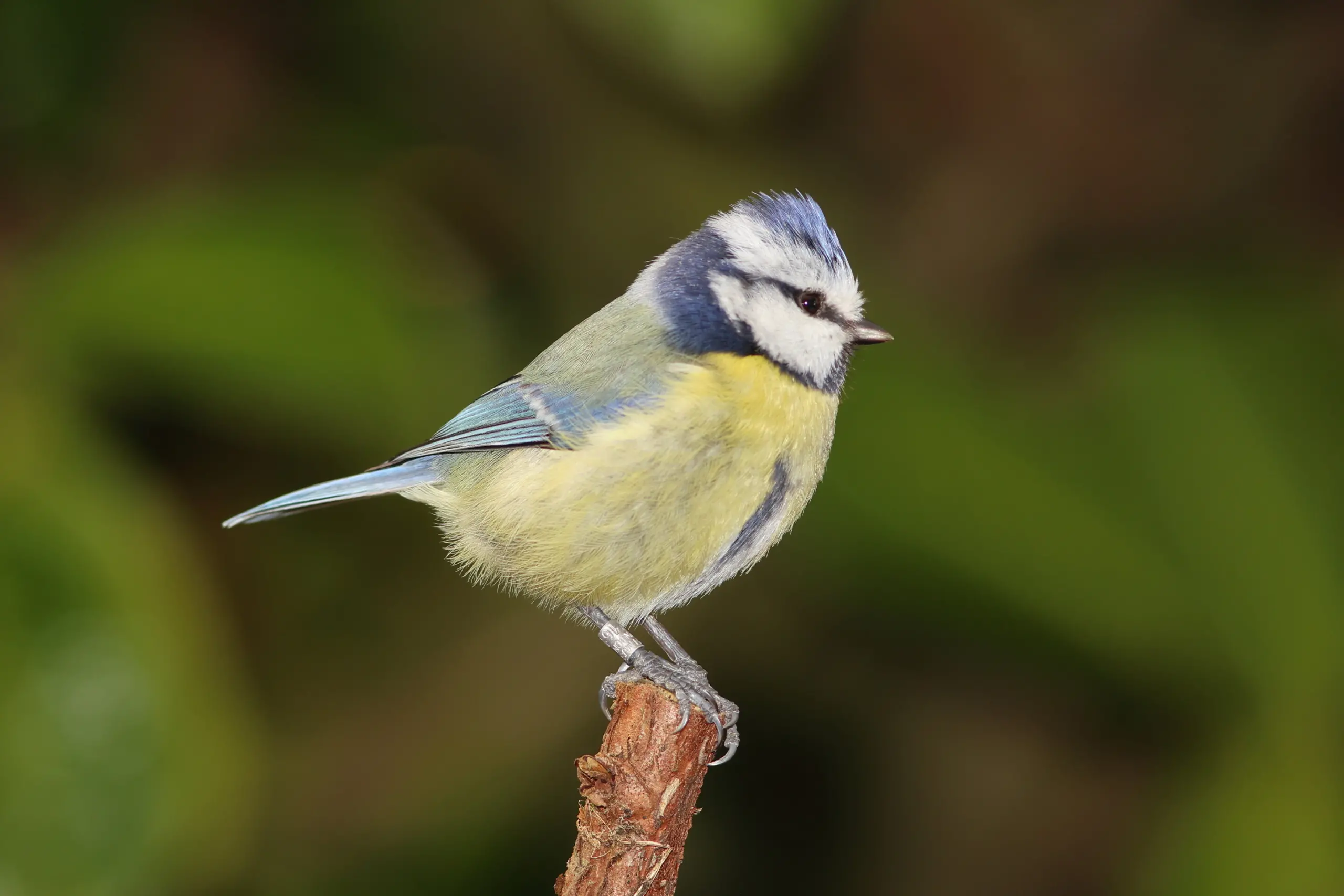
- Geographic Range: Songbirds are found across all continents except Antarctica, thriving in a range of ecosystems from tropical rainforests to temperate woodlands and arid deserts. Their adaptability allows them to colonize diverse habitats, making them one of the most widely distributed avian groups.
- Migration Patterns: Many songbirds exhibit migratory behaviors, traveling thousands of kilometers between breeding and wintering grounds. For instance, the famous migration of the Arctic Tern showcases the extreme distances some species will cover to meet seasonal challenges.
- Habitat Specificity: Various songbird species have evolved to thrive in specific habitats, exhibiting strong associations with particular ecological conditions. For instance, migratory warblers may favor dense foliage during breeding but inhabit marshes in winter.
- Anthropogenic Influences: Human activities significantly affect songbird distribution, with habitat destruction and urbanization leading to population declines. Areas of high species richness are often concentrated in regions with relatively intact ecosystems, emphasizing the importance of conservation efforts to safeguard these habitats.
- Conservation Status: Understanding the status of songbird populations globally is critical for conservation planning. Species’ distributions can inform habitat preservation initiatives and help to target areas that require urgent protection.
Analyzing the global distribution trends of songbirds provides insights into the conservation challenges they face, emphasizing the need for coordinated effort to protect their habitats and ensure their survival.
Songbird Behavior
The behavior of songbirds extends beyond melodies and mating rituals; it encompasses a broad spectrum of activities that contribute to their survival and reproductive success. Observing songbird behaviors enriches our understanding of these avian creatures.
- Singing Behavior: The intricate vocalizations of songbirds serve multifaceted purposes, including mate attraction, territorial defense, and social communication. Males often engage in elaborate singing displays during the breeding season to assert territory and lure potential mates. For example, the enchanting song of the Common Nightingale is renowned for its complexity and beauty, showcasing the importance of vocal performance in their courtship rituals.
- Social Structures: Many songbirds exhibit complex social behaviors, often forming flocks for foraging or migratory purposes. In these groups, social hierarchies can dictate feeding opportunities and interactions, demonstrating that communication and cooperation are essential to their survival.
- Nesting Behavior: Nesting habits are critical to songbird reproduction. Species exhibit a wide variety of nesting behaviors, from elaborate constructions in trees to more straightforward ground nests. For instance, the woven nests of weaver birds illustrate impressive construction skills, while the cavity-nesting behaviors of species like the Barn Swallow exemplify adaptability to diverse environments.
- Foraging Techniques: Songbirds employ different foraging strategies depending on food availability and habitat characteristics. Some species, such as the Black-capped Chickadee, use a “hording” strategy to cache food for later, demonstrating higher cognitive abilities associated with food storage and retrieval.
- Territorial Defense: Territoriality is a prevalent behavior among songbirds, especially during the breeding season. Males may establish and defend territories by singing loudly, displaying aggressive postures, or chasing intruders. This behavior not only secures vital resources but also ensures better mating opportunities.
By understanding these behaviors, we can further appreciate the ecological roles songbirds play in their environments. Their complex interactions, both with each other and with their surroundings, illustrate the intricate web of life that exists within ecosystems.
Singing and Communication in Songbirds
Singing in songbirds is one of the most fascinating aspects of their behavior, serving critical functions in communication, social interactions, and reproductive success. The complexity and variability of their songs reveal a rich tapestry of avian life.
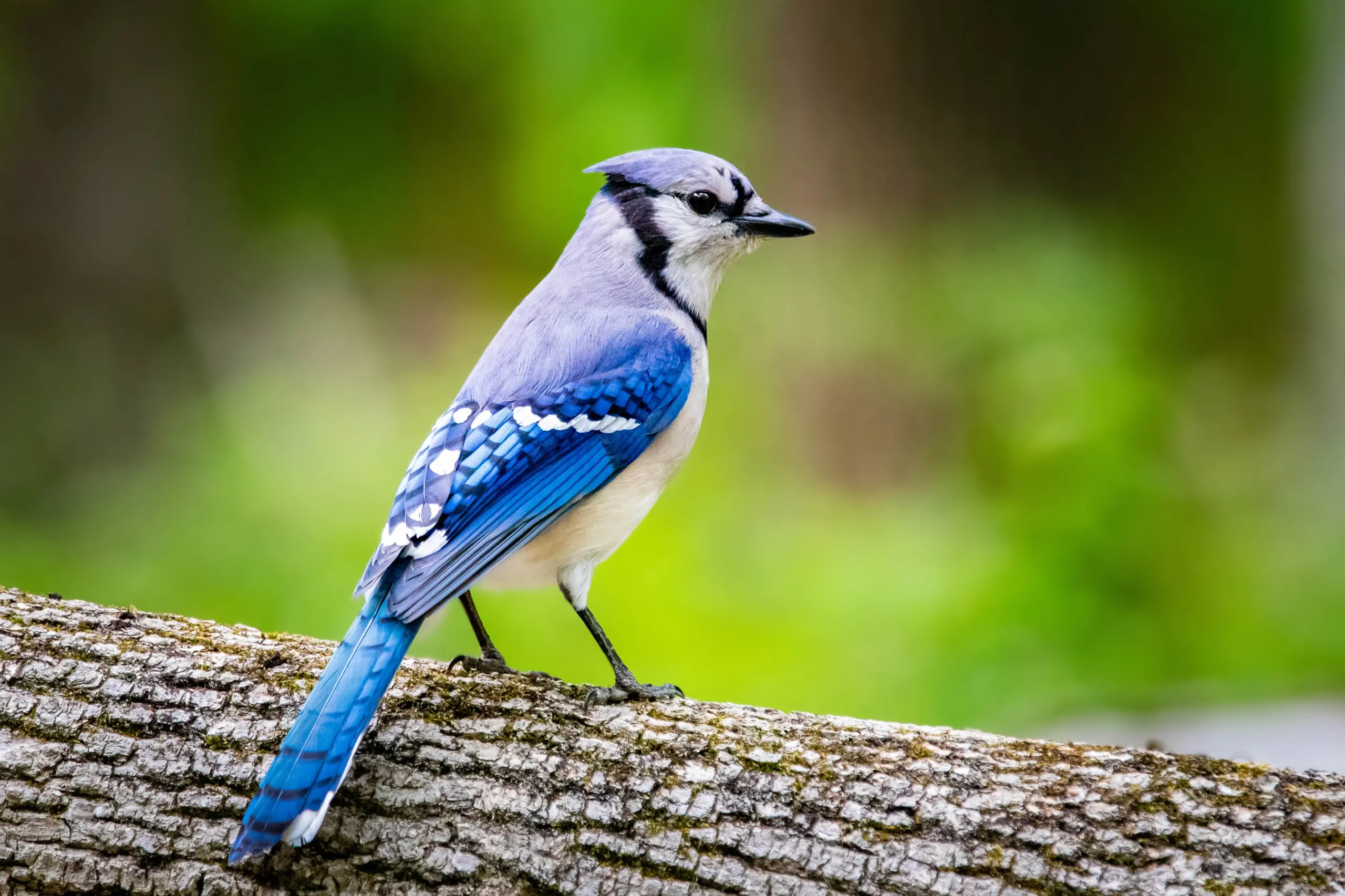
- Vocal Anatomy: The syrinx, a unique vocal organ located where the trachea splits into the bronchi, allows songbirds to produce a remarkable range of sounds. This specialization enables them to create not only melodious songs but also to mimic various sounds from their environment, showcasing an impressive degree of vocal adaptability.
- Functions of Song: The primary functions of song include territorial defense, mate attraction, and communication among individuals. Males often use their songs to assert dominance in a territory, warding off competitors. For example, the distinctive song of the Wood Thrush is not only a beautiful melody but also a declaration of its claim over a specific area.
- Learning to Sing: Young songbirds learn their songs through a process akin to language acquisition in humans. They listen to the songs of adult models, mimicking and practicing until they can produce their own. The timing and quality of this learning significantly impact their breeding success, as males with more complex songs tend to attract more mates.
- Social Communication: Beyond singing, songbirds utilize various vocalizations for immediate communication. Alarm calls, social contacts, and even subtle variations within songs can convey different messages, enhancing their social interactions. This adaptability and complexity in communication highlight their social nature and cognitive abilities.
- Cultural Transmission: Research indicates that song patterns can vary geographically, leading to the development of “dialects” within bird populations. This phenomenon is similar to human language variations and is an exciting area of study in avian communication.
Through singing and communication, songbirds create complex social networks and express their identities. These vocal interactions enhance our understanding of animal behavior and underscore the intricate relationships among species and their environments.
Mating Rituals and Nesting Habits
Mating rituals and nesting habits among songbirds are intricate and varied, serving crucial roles in their reproductive strategies. These behaviors highlight the complexity of avian life and the adaptations that enhance reproductive success.
Mating Rituals of Songbirds:
- Courtship Songs: Male songbirds often perform elaborate courtship songs to attract females. The complexity, duration, and frequency of these songs can indicate a male’s health and genetic quality. For example, the intricate melodies of the Nightingale are not just beautiful but signal the male’s fitness, making it a focus of female choice.
- Visual Displays: Many species engage in visual displays, showcasing their plumage to impress potential mates. Such displays often occur alongside vocalizations, creating a multisensory courtship display. Brightly colored feathers, like those of the male Indigo Bunting during courtship, serve as an important signal for females assessing mate quality.
- Behavioral Interactions: Interactions between mates play a significant role in building pair bonds. Behaviors such as preening and mutual feeding reinforce connections and demonstrate partnership readiness. Additionally, such cooperative behaviors are essential for successful parenting.
- Gift-Giving: Some species incorporate gift-giving into their courtship rituals, where males present food or other items to females. This behavior not only showcases a male’s resourcefulness but also signals his potential parental investment, enhancing his attractiveness.
Nesting Habits of Songbirds:
- Nest Construction: Female songbirds often take the lead in building nests, selecting safe sites based on predator risk and resource availability. The materials used can range widely, with some species like the House Wren incorporating twigs and grasses into their nests, while others may use mud and feathers for insulation.
- Egg Laying: After building a nest, the female lays a clutch of eggs, usually varying from two to five, depending on the species. The number of eggs is often influenced by environmental factors like food availability and season.
- Incubation and Brooding: The incubation period varies by species but typically lasts from 11 to 15 days. Both parents may share responsibilities, taking turns incubating the eggs and later feeding the chicks. This cooperative parenting maximizes the chances of survival for the young birds.
Through these intricate mating rituals and nesting habits, songbirds illustrate the balance between instinctive behavior and environmental adaptation. Their reproductive strategies underscore the critical connections between behavior, ecology, and the survival of avian populations.
Conservation of Songbirds
Conservation efforts aimed at protecting songbird populations focus on various strategies to address habitat loss, climate change, and other threats. The importance of songbirds extends beyond their ecological roles they are also indicators of environmental health and biodiversity.
- Habitat Preservation: Protecting and restoring natural habitats is essential for songbird conservation. Many species depend on specific environments for nesting and feeding. Conservation measures often involve creating buffer zones around vital habitats to minimize human impact and disturbance.
- Understanding Threats: Songbirds face numerous threats, making effective conservation strategies imperative. Habitat degradation, climate change, and pollution all jeopardize their populations. Research into songbird life cycles and responses to these threats informs targeted conservation measures tailored to species’ needs.
- Public Awareness and Education: Engaging the public in conservation initiatives is crucial for the protection of songbirds. Education raises awareness of the importance of these birds and encourages community involvement in habitat restoration projects, fostering a sense of stewardship toward local ecosystems.
Threats to Songbird Populations
- Habitat Loss: Urbanization, agricultural expansion, and deforestation lead to significant habitat destruction, diminishing areas where songbirds can thrive. This loss often results in decreased population sizes and diversity.
- Predation by Domestic Cats: Outdoor domestic cats pose a significant threat to songbirds, responsible for billions of bird deaths annually. This predation has detrimental effects on vulnerable populations and calls for responsible pet ownership and management strategies.
- Collisions with Glass: Songbirds frequently collide with glass structures, with estimates indicating that billions of birds die each year due to such impacts in the United States alone. Implementing design solutions for buildings, such as bird-safe glass, can mitigate this threat.
- Climate Change: The changing climate affects songbird distribution, breeding productivity, and timing of migratory patterns. In particular, rising temperatures threaten various species, making it imperative to address greenhouse gas emissions and habitat conservation.
- Contaminants: The use of pesticides and pollutants significantly impacts songbird health, leading to reproductive issues and altered migratory behaviors. Advocating for sustainable agricultural practices and reducing chemical use are essential steps for protection.
- International Trade: The illegal trade of songbirds poses a growing danger, particularly in markets where specific species are sought for their beauty or song. Addressing this issue requires stricter enforcement of wildlife protection laws.
- Apathy and Lack of Awareness: Many individuals remain unaware of the challenges songbirds face, hindering conservation efforts. Raising awareness and fostering a connection to nature can mobilize public support for protection initiatives.
Conservation Efforts for Songbirds
- SAFE North American Songbird Program: Initiated by the Association of Zoos and Aquariums, this program prioritizes awareness of threats facing North American songbirds and promotes sound conservation practices, including habitat restoration and predator management.
- Promoting Bird-Friendly Practices: Individuals can take actionable steps to promote bird safety by implementing bird-friendly window treatments and creating habitats in their gardens. Supporting sustainable product choices, like Bird Friendly® Coffee, enhances positive impacts on songbird populations.
- Citizen Science Initiatives: Engaging the public in data collection through citizen science projects encourages community involvement in monitoring songbird populations. Programs such as Project FeederWatch and local bird counts provide valuable insights into population dynamics.
- Research and Monitoring: Ongoing research into songbird health, ecology, and the impacts of climate change provides critical data necessary for effective conservation strategies. Monitoring initiatives help track changes in populations and inform management decisions.
- Legislation and Policy Advocacy: Advocating for stronger environmental policies that safeguard songbird habitats can mitigate many threats. Supporting legislation focused on habitat protection, pollution reduction, and wildlife management is essential for ensuring the long-term survival of songbird species.
Through concerted conservation efforts and community involvement, there is potential to safeguard songbird populations and preserve the rich tapestry of avian life that enhances our ecosystems.
Songbirds in Culture
Songbirds hold a significant place in various cultures as symbols of beauty, freedom, and connection to nature. Their melodious songs resonate deeply within artistic expressions and human experiences, highlighting their cultural significance.
- Universal Symbols: Across cultures, songbirds represent joy and inspiration. They symbolize aspirations and the human spirit, often serving as messengers between the earthly realm and the divine. In Native American traditions, songbirds are seen as bearers of wisdom and messages from nature.
- Literary and Poetic Connections: Songbirds frequently appear in literature, embodying themes of love, longing, and the beauty of nature. For instance, the nightingale is emblematic of romantic love in various literary works, often representing the voice of the heart.
Songbirds in Literature and Art
- Symbolism in Poetry: Songbirds have inspired poets and writers throughout history. For instance, in John Keats’s famous “Ode to a Nightingale,” the songbird symbolizes artistic inspiration and the transient nature of beauty. The imagery associated with songbirds evokes feelings of freedom and serenity, resonating at a profound emotional level.
- Notable Literary Examples:
- In Harper Lee’s “To Kill a Mockingbird,” the mockingbird symbolizes innocence and moral integrity, underscoring themes of compassion and empathy.
- In Alice Jones’s poem “Birds,” the movements of barn swallows reflect carefree living, embracing the notion of joy and freedom found in nature.
- Visual Representations in Art: Throughout art history, songbirds have appeared as symbols of beauty and spirituality. From ancient cultures to modern interpretations, birds often convey themes of hope and connection with nature. The use of bird imagery in contemporary installations encapsulates the ever-evolving relationship between humanity and avian life.
Through literature and art, songbirds inspire, connect, and provoke thought about the human experience and its relationship with the natural world. Their cultural significance serves as a reminder of the beauty inherent in nature and the emotional connections we share with these remarkable creatures.
The Role of Songbirds in Folklore
- Mythological Connections: Songbirds frequently appear in folklore, embodying themes of transformation, renewal, and spiritual messages. For instance, the wren is considered the king of birds in Celtic mythology, symbolizing prosperity and rebirth, especially around the winter solstice.
- Dream Symbolism: In various cultures, dreaming of songbirds is interpreted as a sign of happiness and emotional balance. Their presence in dreams often signifies tranquility and optimism, reflecting an inner harmony associated with the natural world.
- Cultural Narratives: The roles of songbirds in different societies highlight the deep connection between humans and nature. Indigenous peoples have long recognized the significance of bird songs as spiritual messages, linking the human experience to the rhythm of the natural world.
In summary, songbirds serve as powerful symbols of communication, beauty, and human emotion. Their roles in cultural narratives demonstrate our enduring bond with nature and the important messages expressed through their songs. This rich tapestry of meanings emphasizes the necessity of protecting these species and their habitats for future generations.






